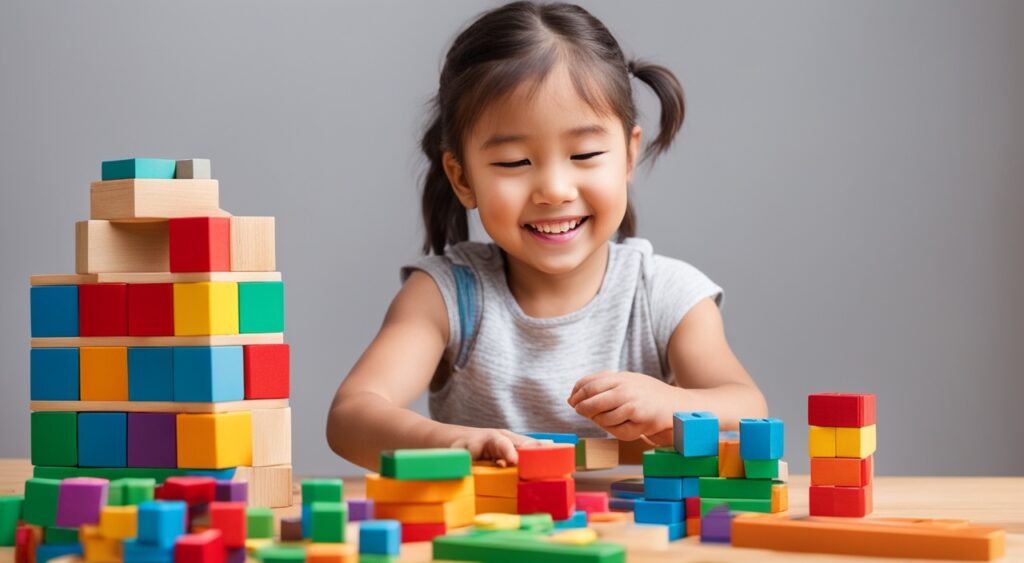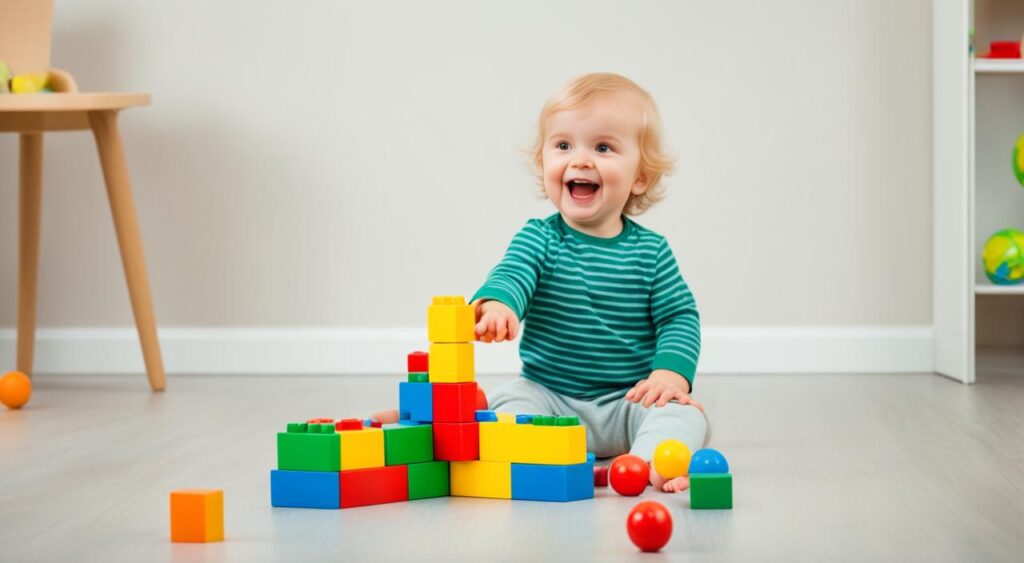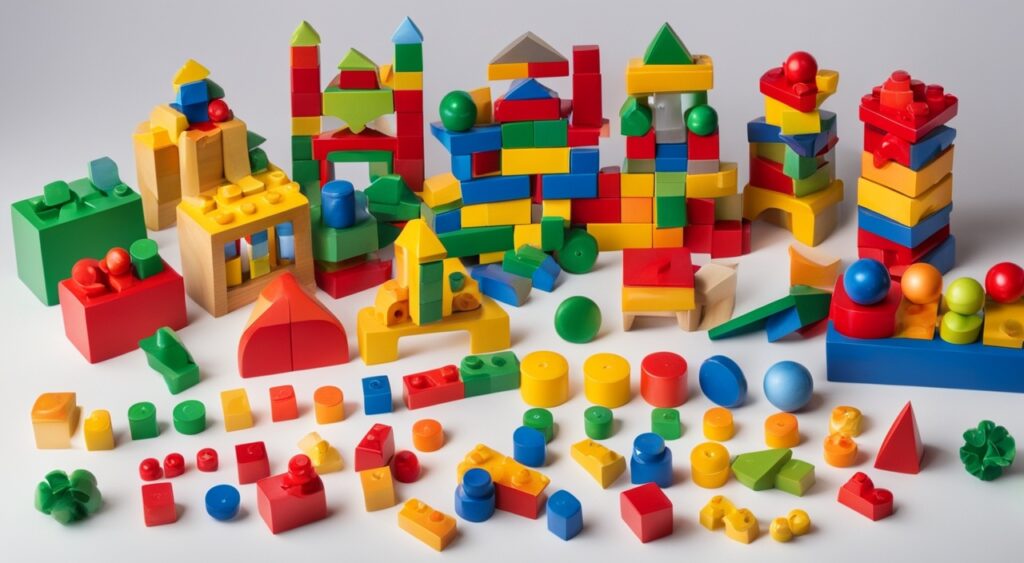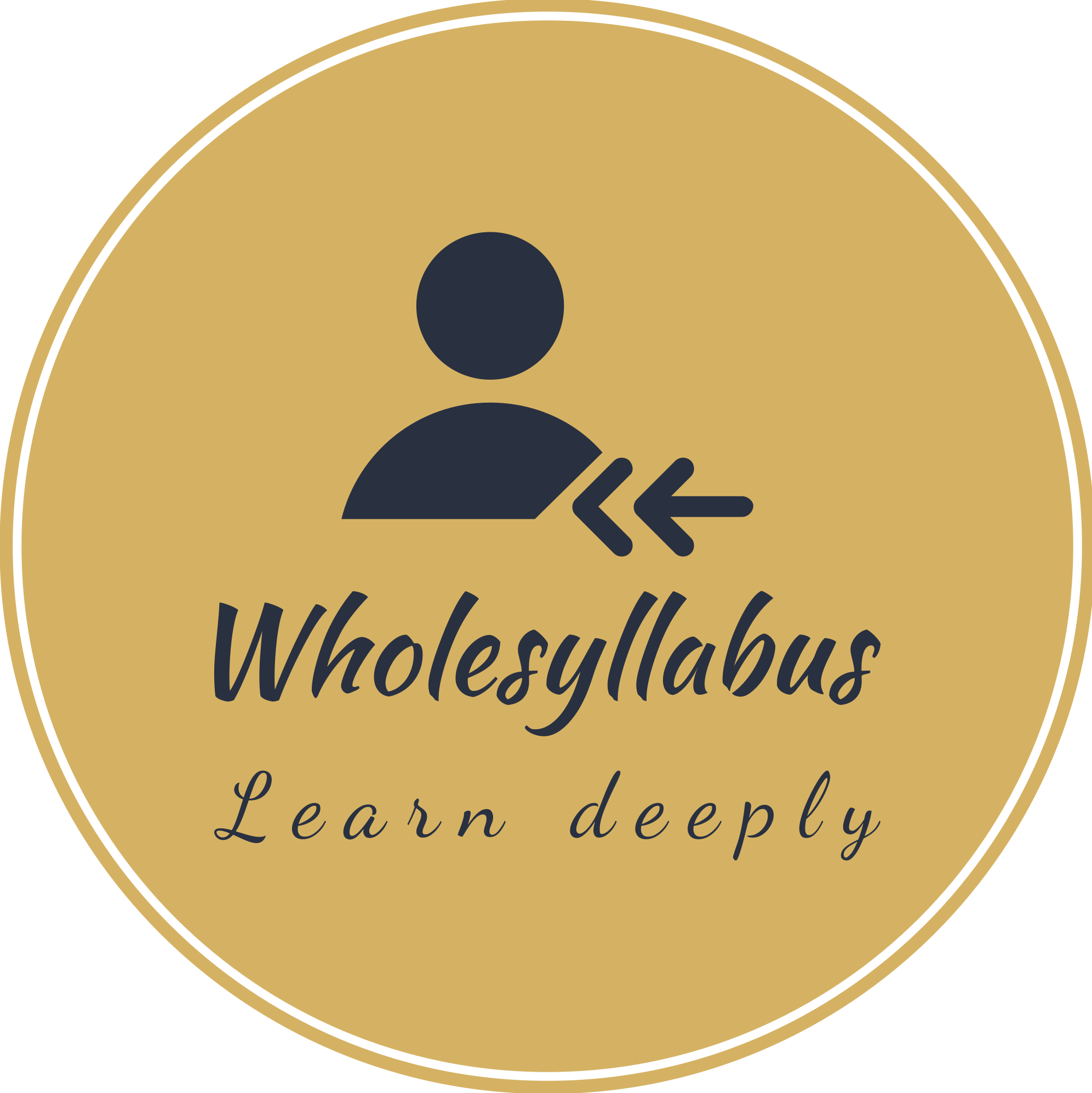A recent survey by the National Association for the Education of Young Children found something interesting. Children learn best when they are actively playing and thinking. Toys play a big role in education and childhood growth. They help with thinking, feeling, and getting along with others.
Toys make learning fun and help kids get important skills. For babies and toddlers, toys connect their dreams with the real world. With toys like building blocks and craft kits, kids can explore and grow. Toys are key to helping kids learn and grow.

Key Takeaways
- Toys contribute significantly to cognitive, motor, psychosocial, and linguistic skills development.
- Active play helps children develop essential problem-solving and critical thinking skills.
- Educational toys made from natural materials, like wood, promote creativity and fine motor skills.
- Interactive toys encourage social skills development by teaching sharing, teamwork, and communication.
- Engaging with toys enhances concentration and makes learning enjoyable and effective.
The Role of Play in Childhood Development
Play is key to childhood, helping kids grow and learn. It lets them explore and feel confidence, be creative, and happy. This is why we ask, are toys important for child development? Studies show play boosts thinking, moving, social, and emotional skills.
Play helps kids learn important skills for school and life. It builds self-esteem, resilience, and social skills. Playing with our kids strengthens our bond and sets a strong base for growth. Encouraging them to tackle challenges in play teaches them about limits and resilience.
Research says it’s crucial to balance screen time with real play. Limiting screen time helps kids have enough free play. Making tech-free areas at home, like during meals and before bed, helps too. With less playtime over the years, we must push for play in childhood education.
Free play is key in early childhood programs. Just 15 minutes of play can lower stress in kids. It also helps them make friends and develop social skills for life.
| Play Type | Benefits |
|---|---|
| Physical Play | Enhances fitness, coordination, and balance |
| Cognitive Play | Promotes problem-solving and critical thinking |
| Creative Play | Stimulates imagination and boosts creativity |
| Social Play | Builds friendships and social skills |
| Emotional Play | Fosters resilience and emotional intelligence |
Encouraging a playful spirit in kids helps them grow and do well. Toys in education help them explore, learn, and grow better.
“The World Health Organization recommends that children engage in active play to support physical and mental health.”
Why Are Toys Important for Learning?
Toys are key to our kids’ learning journey. They entertain and help children explore and understand important ideas. Toys boost thinking skills like solving problems and thinking critically. Playing with toys lets kids learn by trying things out, which is crucial for learning.
Studies show that 90% of play for preschoolers in the U.S. involves toys. This shows how important toys are for growing up. Toys help kids learn about roles, cause and effect, and symbolic play. This matches Piaget’s theory on how kids develop their thinking from infancy to age twelve.
We need to talk about how playtime has dropped over the years. Kids now play about 8 hours less a week than before. This drop leads to more sitting around, with 73% of preschoolers not getting enough activity. This shows why toys are key in helping kids learn at school.
Our surroundings affect how active kids are. Adding green spaces makes kids want to play more, with 90% showing more interest. Playing with nature and open-ended toys boosts creativity and social skills. This makes learning better for kids.
It’s important to have a variety of toys. Toys that don’t focus on gender or specific tasks help everyone be creative and develop thinking and language skills. Classic toys like hardwood blocks and construction sets are great for building important skills. So, giving kids a mix of fun and educational toys is crucial for their growth.
| Type of Toy | Skills Developed | Recommended Age Group |
|---|---|---|
| Activity Toys | Coordination and motor skills | Infants and Toddlers |
| Creativity Toys | Self-expression and imagination | Preschool |
| Learning Toys | Knowledge acquisition | School-age |
| Open-ended Toys | Reasoning and social skills | All age groups |
How Toys Help Children Learn
Toys are key in helping children learn and grow. They offer chances for learning through play. Toys help in many ways, from boosting thinking skills to encouraging creativity and social growth. It’s important to know how toys help kids develop. You can join different homeschool co-ops to know how they get benefited by toys.
Enhancing Cognitive Skills through Play
Playing with toys helps kids improve their thinking skills. Toys like shape sorters and building blocks make them think deeply and solve problems. This play boosts their early math and language skills.
These toys also make kids focus better and remember more. So, toys are crucial for kids’ learning.
Fostering Creativity and Imagination
Kids do best when they can create and dream. Toys like building sets and art supplies let them tell their stories and show who they are. This fun play makes them happy and teaches them to think deeply.
It also teaches them about expressing themselves and being innovative.
Supporting Social and Emotional Development
Toys help kids bond with parents and make friends. Group play teaches them about relationships and feelings. Playing together helps them understand others’ emotions.
Cooperative games make them more empathetic and teach social skills. This helps them grow emotionally and socially.
| Age Group | Toy Types | Skills Developed |
|---|---|---|
| Ages 1-2 | Stack Rings | Fine motor skills, shape recognition |
| Ages 3-4 | Building Blocks | Creativity, spatial awareness |
| Ages 5-6 | Art Supplies | Creativity, self-expression |
| Ages 7-8 | Science Kits | Curiosity, scientific thinking |
| Ages 9-10 | Strategy Games | Critical thinking, logical reasoning |
Motor Skill Development with Toys
Toys are key in helping kids develop their motor skills. Fine motor skills are about using small muscles in the hands and fingers. They help with precise movements needed for daily tasks. Playing with toys lets kids improve these skills in a fun way.
Fine vs. Gross Motor Skills
Fine motor skills deal with small movements and control. Toys like building blocks, puzzles, and Play-Doh are great for this. They help build hand strength, dexterity, and spatial awareness.
Gross motor skills use bigger muscles and are built through active play. Toys like tricycles and swings are perfect for this. Each type of toy helps with different physical skills.
The Importance of Hand-Eye Coordination
Hand-eye coordination is crucial for catching, throwing, and drawing. Toys that make this skill fun help kids practice. Stringing beads is a great way to improve finger dexterity and coordination.
Choosing toys that fit a child’s age helps with both fine and gross motor skills. These activities support physical growth and make learning fun. Yes, toys are essential for physical development!

Toys That Promote STEM Learning
Understanding the importance of toys in STEM education shows how certain toys can greatly help kids learn. Many toys make learning about Science, Technology, Engineering, and Mathematics fun and interactive. This makes learning fun and effective.
The NSI Smithsonian Microscope Kit lets kids aged eight and up explore the tiny world up close. With a magnification of up to 900 times, it’s priced at $22.96. This toy sparks curiosity and boosts scientific skills.
The Hydraulic Boxing Bots from Thames and Kosmos, at $34.95, lets tweens and older kids learn about engineering by building their own robots. It’s a hands-on way to understand engineering principles.
The PYXEL A Coder’s Best Friend is priced at $90.99 and introduces coding to kids. It helps them learn technology early on.
The Snap Circuits toy, at $29.99, lets kids dive into electronic engineering. They can easily create different circuits. These toys improve learning and problem-solving skills.
The Marble Coaster Run, now $49.99, offers a fun way to learn about physics. Kids can build and test their physics knowledge. Toys like this show that do toys help kids learn about science? Yes, they do!
We have toys for all ages and stages of development. The LeapFrog Magic Adventures Telescope is for kids five and up. It helps them explore the stars with a 110x zoom feature.
For younger kids, aged 0-3, toys like the Fisher-Price Laugh & Learn Game & Learn Controller and the Tegu Magnetic Wooden Block Set are great. They improve fine motor skills and encourage imagination. These toys support learning without batteries, focusing on unplugged play.
Our collection of 124 STEM toys supports learning through play. They are designed to last and are great for schools and libraries. HABA’s STEM toys are known for their durability.
| Toy Name | Price | Recommended Age | Main Learning Focus |
|---|---|---|---|
| NSI Smithsonian Microscope Kit | $22.96 | 8+ | Science |
| Hydraulic Boxing Bots | $34.95 | 10+ | Engineering |
| PYXEL A Coder’s Best Friend | $90.99 | 10+ | Technology |
| Snap Circuits | $29.99 | 8+ | Engineering |
| Marble Coaster Run | $49.99 | 3+ | Physics |
| LeapFrog Magic Adventures Telescope | Varies | 5+ | Astronomy |
| Fisher-Price Laugh & Learn Game & Learn Controller | Varies | 0-3 | Motor Skills |
| Tegu Magnetic Wooden Block Set | Varies | 0-3 | Imaginative Play |
These toys show how we can spark interest in STEM through fun and educational play.
Exploring Language Skills through Play
Toys are key in helping children develop their language skills. Interactive toys and games boost their ability to express themselves. Through play, kids learn new words and improve how they talk to others.
Playing with others helps kids have back-and-forth talks. This builds their communication skills and friendships. They learn about cause and effect, which helps them understand better.
Playing with toys helps kids use their imagination, which can make them talk more. When they play often and use their imagination, they learn more words and sounds. Copying sounds and words helps them learn even more.
Letting kids choose their toys helps them talk and communicate better. They play all day, showing how important play is to them. Pretend play is key for their growth and learning.
Play therapy can also help kids with speech development. Pretend play shows important steps in growing up. Different play styles show how kids interact with the world.
| Type of Play | Description | Language Development Benefits |
|---|---|---|
| Unoccupied Play | Child engages in random movements. | Basic sensory experiences aid vocabulary. |
| Solitary Play | Child plays alone, focusing on activity. | Fosters independence and self-expression. |
| Associative Play | Children play together with shared interests. | Encourages verbal exchanges and cooperation. |
Toys help kids learn to communicate by making play fun. We support their growth by valuing play. This ensures they get better at talking as they get older.
Developmental Milestones and Age-appropriate Toys
Choosing the right toys is key to supporting kids as they grow. Toys change as children get older, meeting their new interests and skills. It’s important to know what toys help kids grow in areas like thinking, moving, and social skills.
At What Age Do Kids Play with Toys?
Even newborns start exploring through play. Let’s look at toys for different ages:
| Age Group | Toy Type | Focus Area |
|---|---|---|
| Birth to 6 Months | Sensory toys (black-and-white designs) | Visual and tactile exploration |
| 6 to 12 Months | Crawling aids, push toys | Mobility and environmental exploration |
| 1 to 2 Years | Building blocks, musical instruments | Cognitive growth and body awareness |
| 2 to 3 Years | Puzzles, pretend play sets | Problem-solving and imagination |
| 3 to 5 Years | Art supplies, construction toys | Creativity and fine motor skills |
From birth to three years, toys change from simple sensory toys to more complex ones. Most toys for young babies are things they can touch, hold, and hear. As they get older, toys focus more on pretend play and moving around. This shows how important it is to change toys as kids reach new milestones.
By preschool age, kids love to use their imagination. Choosing toys that help with creativity and social skills is key. Knowing when kids start playing with certain toys helps us pick the best ones for their growth.
Toys Help Children Learn: A Look at Educational Tools
Educational toys are key in helping kids grow and develop. They make learning fun and interactive. From simple stacking toys to advanced Montessori sets, these tools cover a wide range of skills.
These toys help improve focus and concentration. Puzzles and ring stackers challenge kids, boosting their sensory and cognitive skills. As they solve these puzzles, they get better at solving problems. This helps them think critically and do well in school.
Creative toys like play-doh and pretend sets encourage imagination. They let kids explore their ideas and think differently. Art and craft sets also help kids express themselves creatively, which goes beyond just play.
Using educational tools can spark scientific curiosity. Magnifiers and eyedroppers let kids see the tiny details of nature. Making bubbles teaches them about shapes and air movement. Playing with different weights of balls shows how mass affects motion. Mirrors introduce them to light and reflection.
Outdoor toys help kids appreciate nature. Magnetic toys teach about magnetism in a fun way. Asking questions about these toys deepens their understanding of the world.
The importance of toys in education is clear. Well-designed toys help kids be creative, think critically, and learn about the world through play.

| Toy Type | Skills Developed | Examples |
|---|---|---|
| Stacking Toys | Fine Motor Skills, Hand-Eye Coordination | Ring stack toys, Wooden blocks |
| Interactive Games | Cognitive Skills, Problem-solving | Puzzles, Board games |
| Creative Play | Imagination, Creativity | Play-doh, Art sets |
| Science Exploration Toys | Scientific Curiosity | Magnifiers, Eyedroppers |
| Outdoor Toys | Sensory Exploration | Magnetic toys, Bubbles |
Physical Activity and Its Impact on Learning
It’s key for teachers and parents to know how physical activity affects learning. Toys and games make a big difference in kids’ brains and health. They help kids stay fit and support their learning skills.
Playing actively is super important for kids. Toddllers need about 60 minutes of playtime every day to grow right. Kids from three to five should play for at least three hours a day. Teens should do an hour or more of exercises that make their heart work harder and build muscles.
Games like jump ropes, sports balls, and scooters keep kids moving. The National Childhood Network says mixing different types of exercises is good for kids’ hearts and bones. Being active every day helps kids have strong bones, better coordination, and more flexibility.
Playing outside has extra perks, like letting kids enjoy nature and feel confident. Fun games like hopscotch, scavenger hunts, and playing with water tables boost fitness and creativity. These activities make learning fun and help kids meet important goals.
Conclusion
Toys are key in education and growth, helping shape our kids’ minds and hearts. They are more than just fun items; they are crucial tools for learning. Through play, children develop their thinking, storytelling, problem-solving, and creativity.
Building with blocks and solving puzzles helps kids think critically and understand space and logic. These skills are vital for doing well in school and making good decisions in life.
Toys also play a big part in teaching social skills. Playing games with others teaches kids about sharing, taking turns, and solving problems. Simple toys like dolls and puppets help kids share feelings and understand others, building emotional smarts.
Toys offer many benefits for our kids. They improve hand-eye coordination with toys like stacking rings and spark curiosity in science kits. Toys are not just for fun; they are key to learning effectively. By choosing a variety of educational toys, we help our kids reach their full potential through play.
Do toys help kids learn?
Yes, toys are key in helping kids learn. They boost skills in thinking, moving, socializing, and feeling.
Are toys important for child development?
Absolutely! Toys are vital for reaching important milestones and skills in kids.
How do toys help children learn about STEM subjects?
Toys like building sets and science kits encourage kids to explore and experiment. They make learning STEM subjects fun through play.
What skills can a child develop from playing with toys?
Toys help kids get better at solving problems, thinking critically, being creative, and working with others.
At what age do kids play with toys?
Kids start playing with toys from the beginning, with their play changing as they grow.
How can toys help a baby learn cause and effect?
Toys that react to a baby’s actions, like pull toys or sound toys, teach them about cause and effect.
Are toys essential for physical development?
Yes, toys that get kids moving can improve their physical skills and coordination. This helps with their overall growth.
What do children learn from playing with toy animals?
Playing with toy animals teaches kids about empathy, responsibility, and how to interact with others. It also boosts their imagination.
How does physical activity influence learning?
Being active helps kids think better and work with others. This makes them do better in school.
Do toys help kids learn in school?
Toys can make learning at school more fun. They help kids practice what they learn in a playful way.
How important are toys in developing language skills?
Toys that talk back help kids talk and communicate better. They grow their vocabulary and learn how to be social.
What is the importance of toys in STEM education?
STEM toys teach kids important skills in science, technology, engineering, and math. They learn by doing hands-on activities.
What are some recommended educational toys for kids?
Great choices include LEGO sets, interactive tablets, and science kits. These toys make learning fun and engaging for kids.

Nawab is an experienced educator with a decade of teaching across preschool to K-12 levels. Holding both a graduate degree and a diploma in elementary education, he is passionate about fostering learning environments that inspire young minds. In addition to his teaching career, Nawab has been actively blogging and writing content for the past four years, sharing insights and resources for educators and parents alike.
